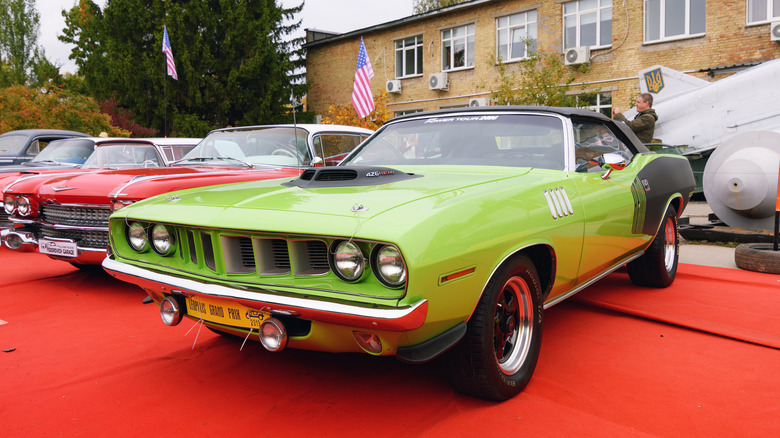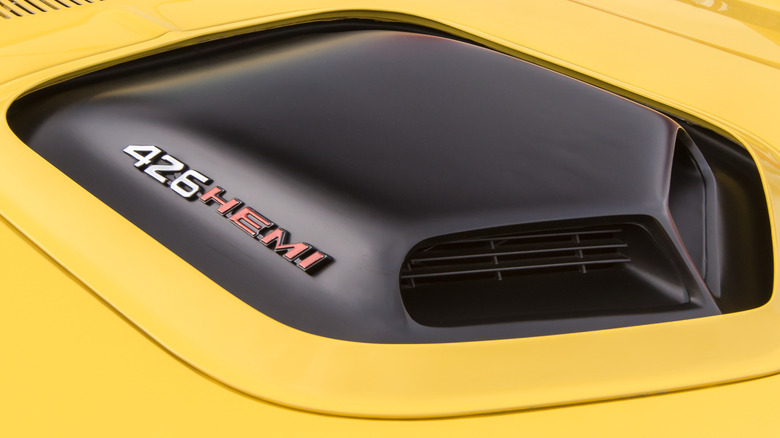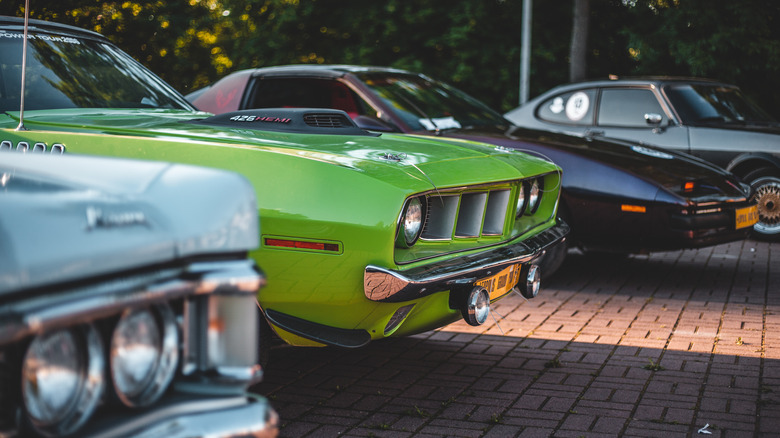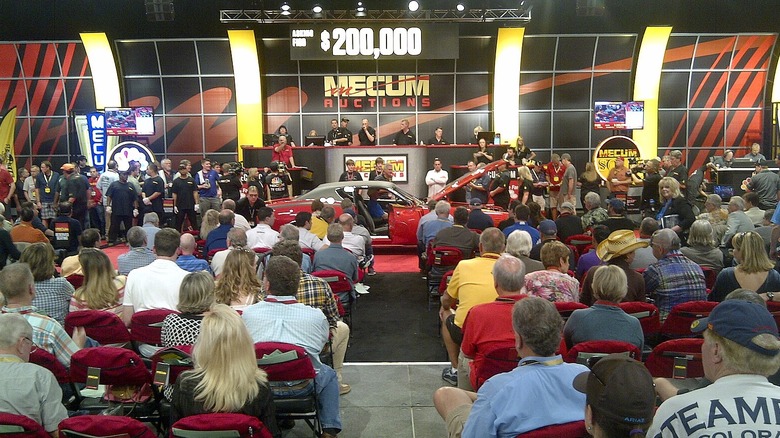All About The 1971 Plymouth HEMI 'Cuda Convertible
Outside of avid classic muscle enthusiasts, not many people know that the 1964.5 Ford Mustang didn't invent the pony car segment that came to define the American enthusiast car market in the late 1960s. The recipe was simple; put a powerful engine in a compact car and make it affordable to the masses. Despite the 'pony' moniker, the A-body Plymouth Barracuda was actually the first of its kind, beating the Mustang to market by just a couple of weeks.
Despite Chrysler reading the market perfectly, the Barracuda lived in the shadow of the Mustang for years, in terms of both sales figures and recognition. However, things changed at the turn of the decade when the Barracuda moved to the nimble E-body platform and was offered with spicier engine configurations. While the 383 4-barrel and monstrous 390 horsepower 440 Super Commando Six Pack V8 options forced pony enthusiasts to put some respect on the Barracuda's name, it was the NASCAR-derived 426 HEMI V8 engine option that elevated the 'Cuda to mythical status.
Only 114 HEMI 'Cudas were produced in their two-year production run between 1970 and 1971, making them one of the rarest pony cars ever made. Just when you thought that it couldn't get any more mouth-watering for collectors, Plymouth chopped the top off. Of those 114 total HEMI-powered 'Cudas, only 21 of them were convertibles and 12 of those were built for 1971.
The have an elephant under the hood
The 1971 HEMI 'Cuda's beating heart is one of the biggest reasons that they are so sought after to this day. There's a reason that there's a massive cutout in the hood of every 1971 HEMI 'Cuda Convertible; there's an elephant in there that needs to breathe! That's only a slight exaggeration.
The HEMI 'Cuda gets its first name from the 426 cubic-inch hemispherical big block V8 in its engine bay. The 426 HEMI got the nickname of "elephant engine" due to its massive weight and size. Displacement used to be the only tried and true route to more power in the 1960s, so the 7.0L elephant was born out of a need for speed.
The 426 HEMI never would have been created if it wasn't for Chrysler president Lynn Townsend's tireless quest for NASCAR supremacy. Chrysler lacked an engine in their 1963 lineup that would meet the FIA's new 7.0L displacement cap, so Townsend had one built based on the cylinder head of the first generation 'FirePower' HEMI and a Chrysler RB block. 426 HEMI-powered cars went on to dominate the 1964 NASCAR season.
The racing HEMI would continue to dominate NASCAR and drag strips for years to come and a street variant of the engine found its way into production cars in 1966. Despite being slightly detuned, the street HEMI was still capable of 425 horsepower and 490 lb-ft of torque, which some say is underrated. That is the engine found in the 1971 HEMI 'Cuda Convertible. 1971 was a special year too, as it was the last year that the 426 HEMI was offered until 2012.
Only 12 were built
There have likely been fewer genuine 1971 Plymouth HEMI 'Cuda Convertible sightings than unicorn sightings. The HEMI 'Cuda Convertible is one of the rarest muscle cars to come out of Detroit ... or anywhere else in the world for that matter. The interesting part is that the Plymouth Barracuda was never designed to be a limited-edition grail car; they were mass-produced.
Plymouth produced 126,586 E-body Barracudas between 1970 and 1974. That's a lot of fish. The numbers get a lot smaller when dealing with convertibles, as only 2,875 Plymouth Barracuda Convertibles were made in 1970 and 1971. The convertible option was dropped after 1971. Then add in the HEMI variable, with only 780 426-powered Barracudas leaving the plant in Hamtramck. The rarity of the 426 likely had to do with the optional engine's $833 add-on price in 1970. That's equivalent to around $6,778 today.
With all of those variables combined, a very minuscule number of 'Cudas checked both the 'convertible' and '426 HEMI' boxes. Plymouth only produced 21 HEMI 'Cuda Convertibles for the entire world. Of those 21, 9 were built in 1970, and 12 were built for 1971.
They are some of the most expensive slabs of American metal sold at auction
Avid car collectors have a tried-and-true hierarchy of importance as far as picking cars is concerned, especially if they're in it to make money. Personal preference is generally pretty low on the list if they're looking for an investment, as the market doesn't cater to individual feelings. History and pedigree are much more important metrics, as the value of a car can hinge on its accomplishments, whether that be on the track or its influence on the community. Rarity is often the most important factor in determining a car's value because everyone wants something that they can't have.
The 1971 HEMI 'Cuda Convertible is one of a few cars that caters to all of those criteria simultaneously. Not only was it one of the most iconic cars of the pony car era, but it also has a NASCAR-dominating power plant under the hood and is rarer than a four-leaf clover in the Sahara. All of those factors combine to make the few '71 HEMI 'Cuda Convertibles that do pop up for sale some of the most expensive American cars ever sold at auction.
In 2014, a pearlescent blue, 4-speed, numbers-matching 1971 Plymouth HEMI 'Cuda Convertible rolled onto the carpet at the Seattle Mecum Auction and was quickly sold to a collector for a then record-breaking $3.5 million. In 2021, another 1971 HEMI 'Cuda Convertible was brought to auction — this one a rare A33 Track Pak-equipped French export — with bids rising to $4.8 million. While that sale would have comfortably been the highest price ever paid for a golden-age American pony car, the reserve wasn't met.



